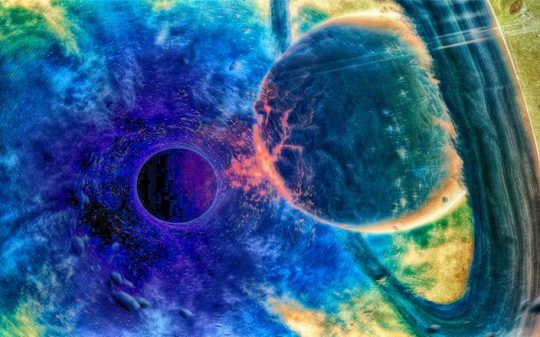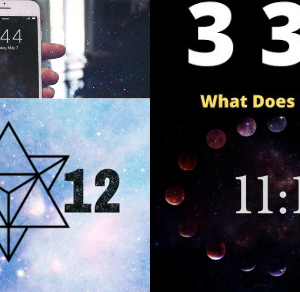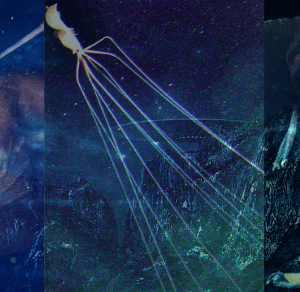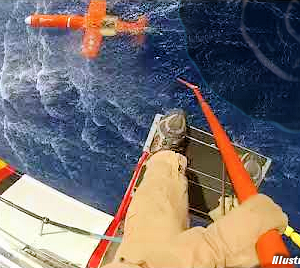According to physicists, there’s a chance that a material object, let’s say a human being or a spacecraft, could at least in theory, survive the journey through a wormhole located in the center of a black hole, and may even have a chance to reach a distinct universe when on the other side.
To prove their wild theory in the absence of an authentic black hole, researchers have shaped a model that would do just that, with the materials going through being a chair, an actual human, and a spacecraft.
“What we did was to reconsider a fundamental question on the relation between the gravity and the underlying structure of space-time,” said one of the members of the research team, Diego Rubiera-Garcia from University of Lisbon in Portugal.
“In practical terms, we dropped one assumption that holds in general relativity, but there is no priori reason for it to hold in extensions of this theory.”
To better understand this notion, one has to recap the basic laws of physic. Einstein’s theory of general relativity suggests that, at the center of each black hole is located a singularity – the place where gravity forces are at their peak, and the concept of time and space as we know them come to an end.
When an object gets near the event horizon, the excruciating forces would crush it in one direction and stretch it in another. If the highlighted object would make it past these violent tidal forces, it would eventually reach the center of the black hole, but with its shape considerably elongated and thin, similar to how spaghetti feel when they’re twisted.
There are numerous possibilities that could apply for a singularity in the center of a black hole, but so far physicists were only able to play with assumptions regarding what would happen there. Physicists at the University of Cambridge in the UK proposed that there’s no solid reason why a singularity wouldn’t exists outside of a black hole, instead of the inside. According to their theory, a universe exceeding five dimensions would have a singularity that is not linked to the event horizon.
However, their suggestion would change the laws of physics as we known them, since for their theory to apply, Einstein’s theory of general relativity would have to be wrong, which is not a completely out of place to consider since science itself is a paradigm.
“If naked singularities exist, general relativity breaks down,” said team member Saran Tunyasuvunakool. “And if general relativity breaks down, it would throw everything upside down, because it would no longer have any predictive power – it could no longer be considered as a standalone theory to explain the Universe.”
Stephen Hawking is also one of the renowned proponents of this theory being wrong. He argues that general relativity seems to battle with quantum mechanics in black holes – an issue identified as the information paradox.
If general relativity theory is only relative, the novel study completed by Rubiera-Garcia’s team indicates that if you remove singularity from a black hole, a finite-sized wormhole remains in its center. After establishing this criteria, they discovered what will happened if one of the three material objects mentioned above would make it past the event horizon and into the wormhole. They referred to these objects as ‘observers’.
“Each particle of the observer follows a geodesic line determined by the gravitational field,” says Rubiera-Garcia. “Each geodesic feels a slight different gravitational force, but the interactions among the constituents of the body could nonetheless sustain the body.”
Their conclusions appeared in the journal Classical and Quantum Gravity and showed that time spent by a light ray in a round trip between two parts of the body is all the time subject to limitations. This reveals that no matter how strong the finite forces are, they could make up for the impact of the gravitational field found in the vicinity and inside the wormhole on a material body that’s travelling through it.
“Thus, different parts of the body will still establish physical or chemical interactions and, consequently, cause and effect still apply all the way across the throat of the wormhole,” the team explains.
So in this acceptance, the theory of general relativity insinuates that an object coming close to a black hole will be crushed on one direction and infinitely stretched on the other. However, if we consider the possibility of a wormhole located in the center of the black hole, its finite radius would only crush the object based on its diameter.
In other words, it’s possible that an object venturing through a black hole could survive and reach the other side, possibly inside another universe, but it will still be crushed, just that not on an infinite scale.
“For a theoretical physicist, the suffering of observers is admissible (one might even consider it part of an experimentalist’s job) but their total destruction is not,” Rubiera-Garcia and his team concluded.
Until we manage to reach a black hole, all of the above remains pure speculative, but scientists are slowly realizing that black holes are not exactly the destructive devils they thought they were. To back-up the following hypothesis, Hawking stated the following in a conference back in August 2015:
“The message of this lecture is that black holes ain’t as black as they are painted. They are not the eternal prisons they were once thought…If you feel you are in black hole, don’t give up. There’s a way out.”
Sources:
- sciencealert
- phys.org
- study
- Photo Credit/ ErikShoemaker









